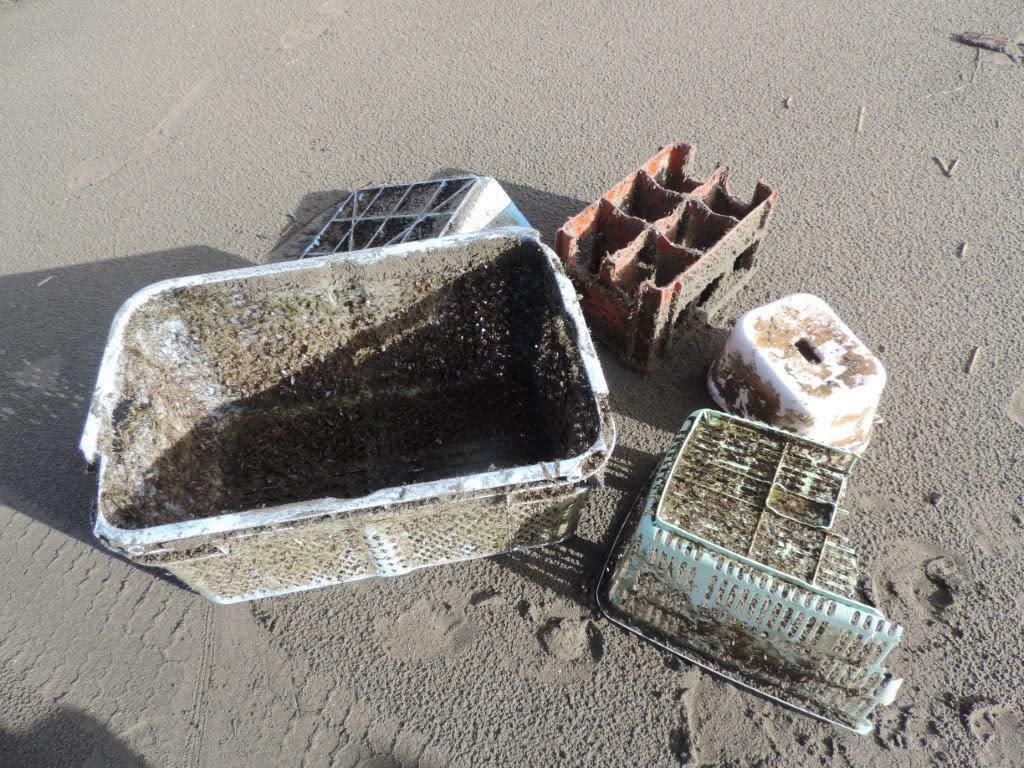
Non-biodegradable items from the 2011 Japanese earthquake and tsunami that were found by Oregon State University researchers along the coast of Oregon.
Oregon State University
Nearly 300 different species have crossed the Pacific Ocean on debris washed out to sea during the 2011 tsunami that hit Japan.
Most of tsunami debris, and the organisms that hitched a ride, have washed up in Oregon and Washington.
A new analysis by scientists from Portland State University, Oregon State University, the Oregon Institute of Marine Biology in Charleston and other institutions shows even six years after the disaster, new species continue to be detected.
Jessica Miller, a researcher at Oregon State University’s Hatfield Marine Science Center in Newport, co-authored the study.

Workers from Oregon Department of Fish and Wildlife remove marine organisms in order to prevent invasive species from a derelict Japanese dock that washed up on Agate Beach. Credit: OSU's Hatfield Marine Science Center.
Oregon State University
“That first dock that landed in June of 2012, landed just four miles from my office,” she said. “That really was the first time it really came on the radar, that gee, large numbers of individuals and species may be transported across.”
The steady stream of trash is revealing just how far and long organisms like fish, algae, shellfish and other invertebrates can travel on these so-called “rafts.”
“We know of kelp beds that have moved hundreds of kilometers and have brought organisms with them. And we’ve know about trees that have brought iguanas to islands in the Caribbean,” says the Smithsonian Environmental Research Center's Brian Steves, who’s based at Portland State University.
“But that isn’t the same scale of bringing something across the whole Pacific Ocean over the course of six years,” he said.
The difference? Plastic, foam, and other human-made materials that won’t sink or biodegrade.
Steves says what is being learned on the West Coast could apply to other parts of the world.
Take the southeastern United States, where major hurricanes this year have caused severe coastal flooding.
“Man’s living closer to the coast now, and we’re putting a lot more of those plastics near the edge of the coast. So things like storm surges and tsunami waves are definitely a concern about pushing invasive species around in a way we hadn’t thought about much in the past,” Steves says.
Storms severity is expected to increase as the climate change continues, and so could instances of these weather events creating ocean-going rafts that spread invasive species.
None of the organisms that have traveled to the West Coast across the Pacific Ocean have established themselves. But the potential is there for the next wave of invasive species.
Steves says he is now analyzing the marine species that survived the trip to see which are most likely to thrive on the West Coast.
The research is published in the Sept. 29 issue of the Journal Science.
